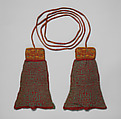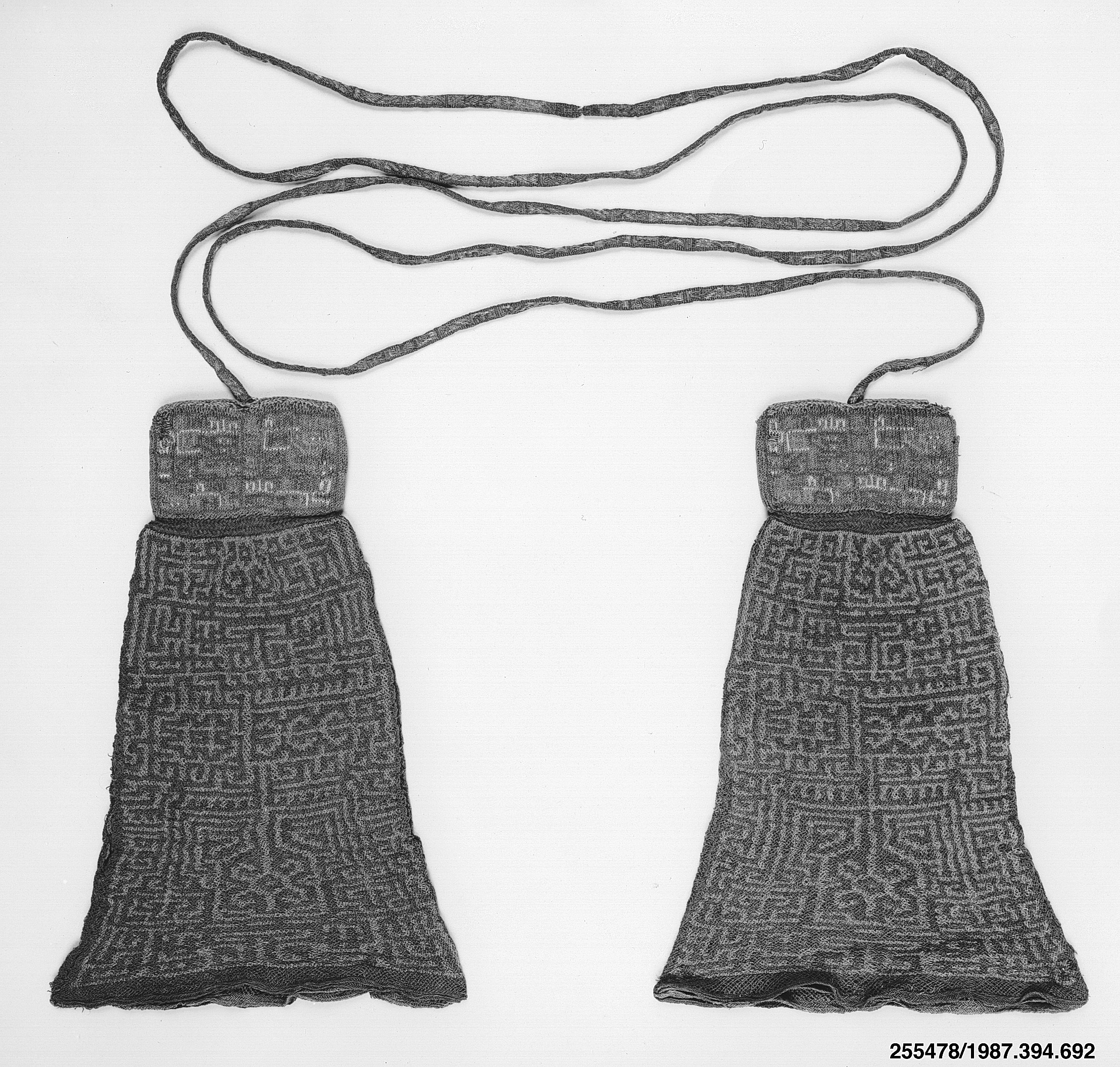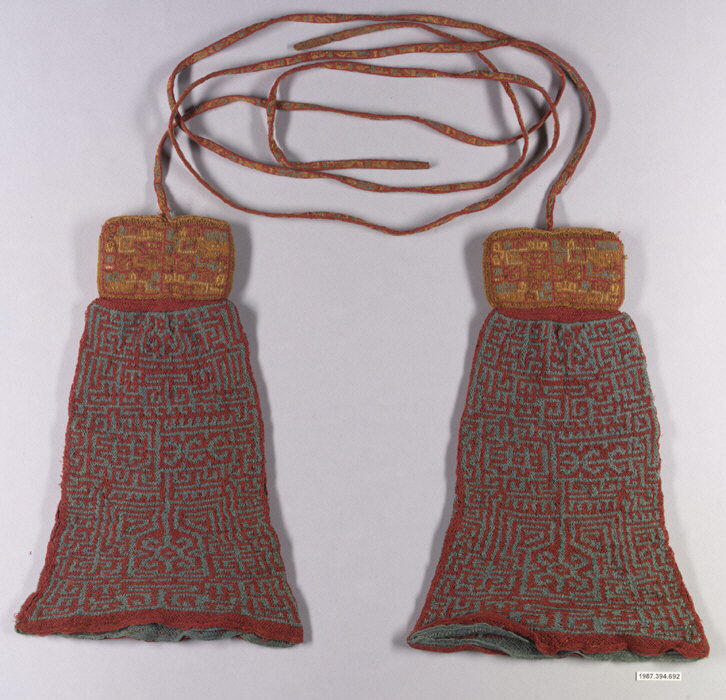Headband with ornamental tassels
Originally part of a single object linked by the thin cord, these textile fragments were probably worn with the cord wrapped around the head and the tassels hanging on each side. During the late Nasca period, on the south coast of Peru, there was a florescence of weaving technology. The tassels reveal both the complexity of Nasca weavings and how multiple techniques could be combined in a single work. In this example, an inner blue textile was woven under the upper red textile. (This is most easily seen at the frayed bottom.) In order to make the design, the colored (blue) threads from the bottom were moved to the top. This exchange of colors was repeated along the tassels’ vertical axis. The textile was originally woven with duplicate images at the two ends. The finished fabric was folded in the middle to form the bottom of the tassel, and the sides were sewn closed. A second textile woven separately with an image that seems to illustrate a human form in a horizontal position was attached to the top. The long cord was woven as a third piece and attached to the two tassel tops. Although the design appears to be purely geometrical, closer analysis of tassels of this type has revealed faces and figures (Frame, 1996).
References and Further Reading
Bjerregaard, Lena. Precolumbian Textiles in the Ethnological Museum in Berlin. Lincoln, NB: Zen Books, 2017, p. 82.
D’Harcourt, Raoul. Textiles of Ancient Peru and Their Techniques. Seattle, WA: University of Washington Press, 1962, pp. 81-82.
Frame, Mary. “Late Nasca Tassels.” In Andean Art at Dumbarton Oaks. edited by Elizabeth Hill Boone, Vol. 2, pp. 366-369. Washington, DC: Dumbarton Oaks Research Library and Collection, 1996.
Stone-Miller, Rebecca. To Weave for the Sun: Andean Textiles in the Museum of Fine Arts, Boston. Boston, MA: The Museum of Fine Arts. Boston, 1992, pp. 92-93.
Due to rights restrictions, this image cannot be enlarged, viewed at full screen, or downloaded.
This artwork is meant to be viewed from right to left. Scroll left to view more.




